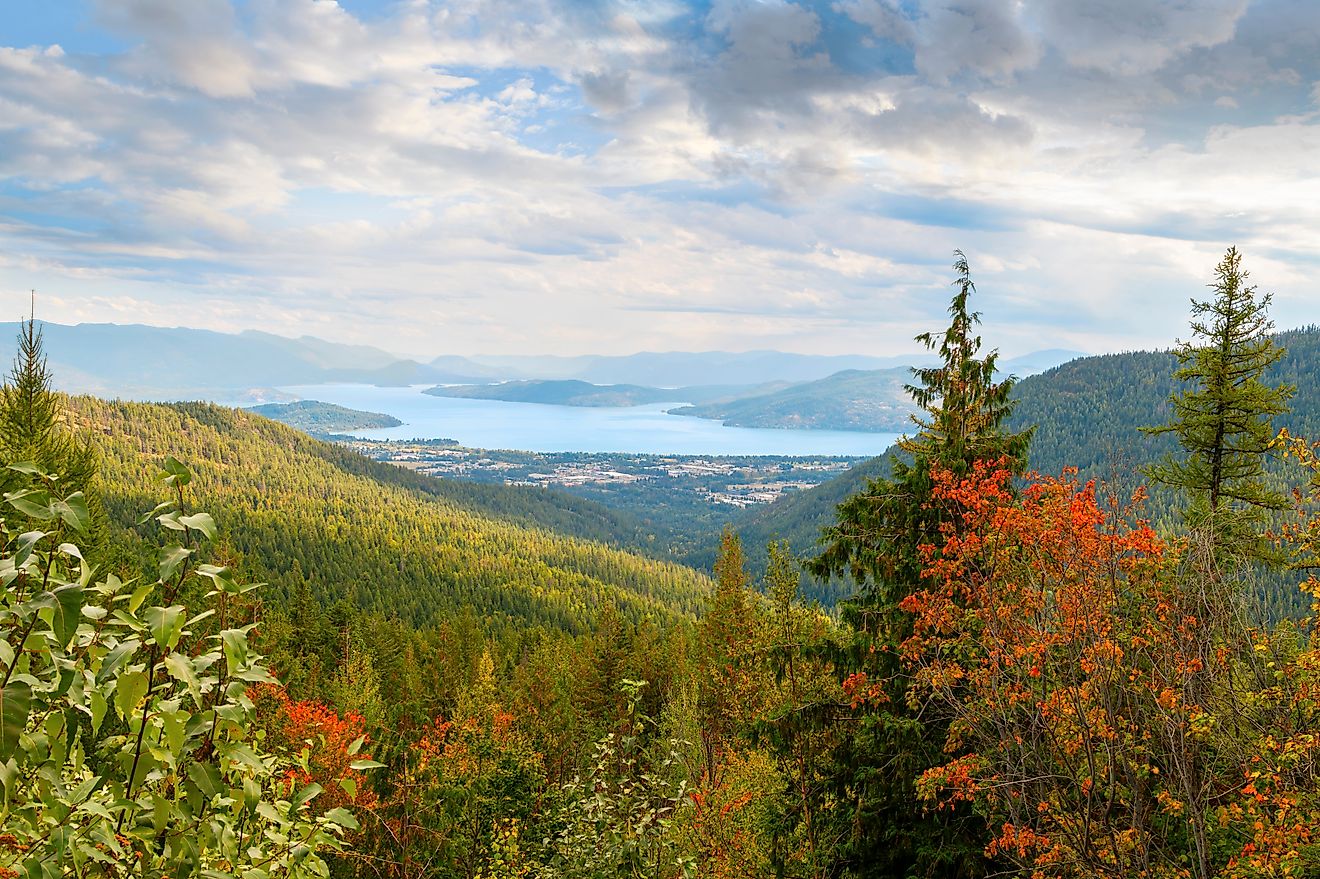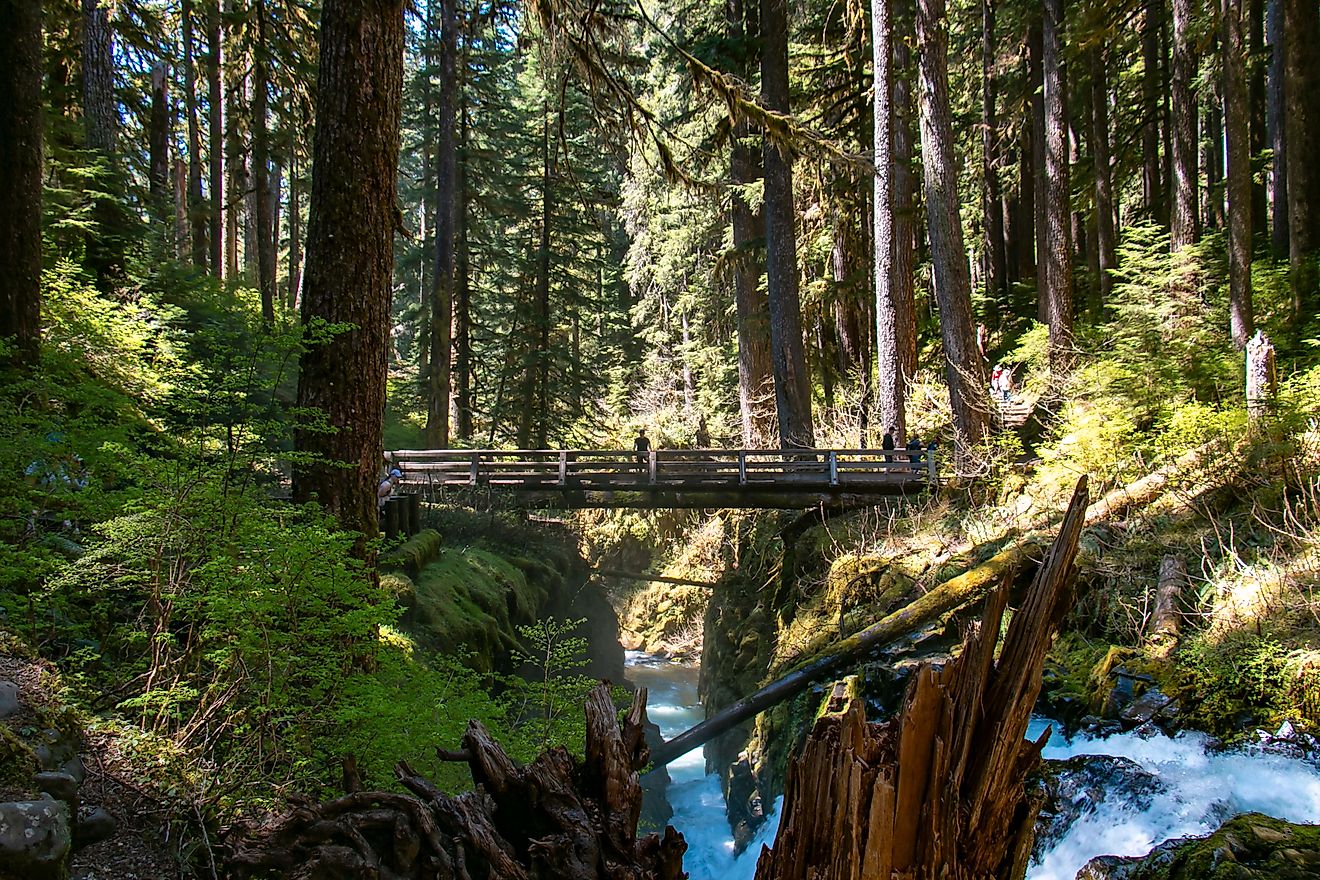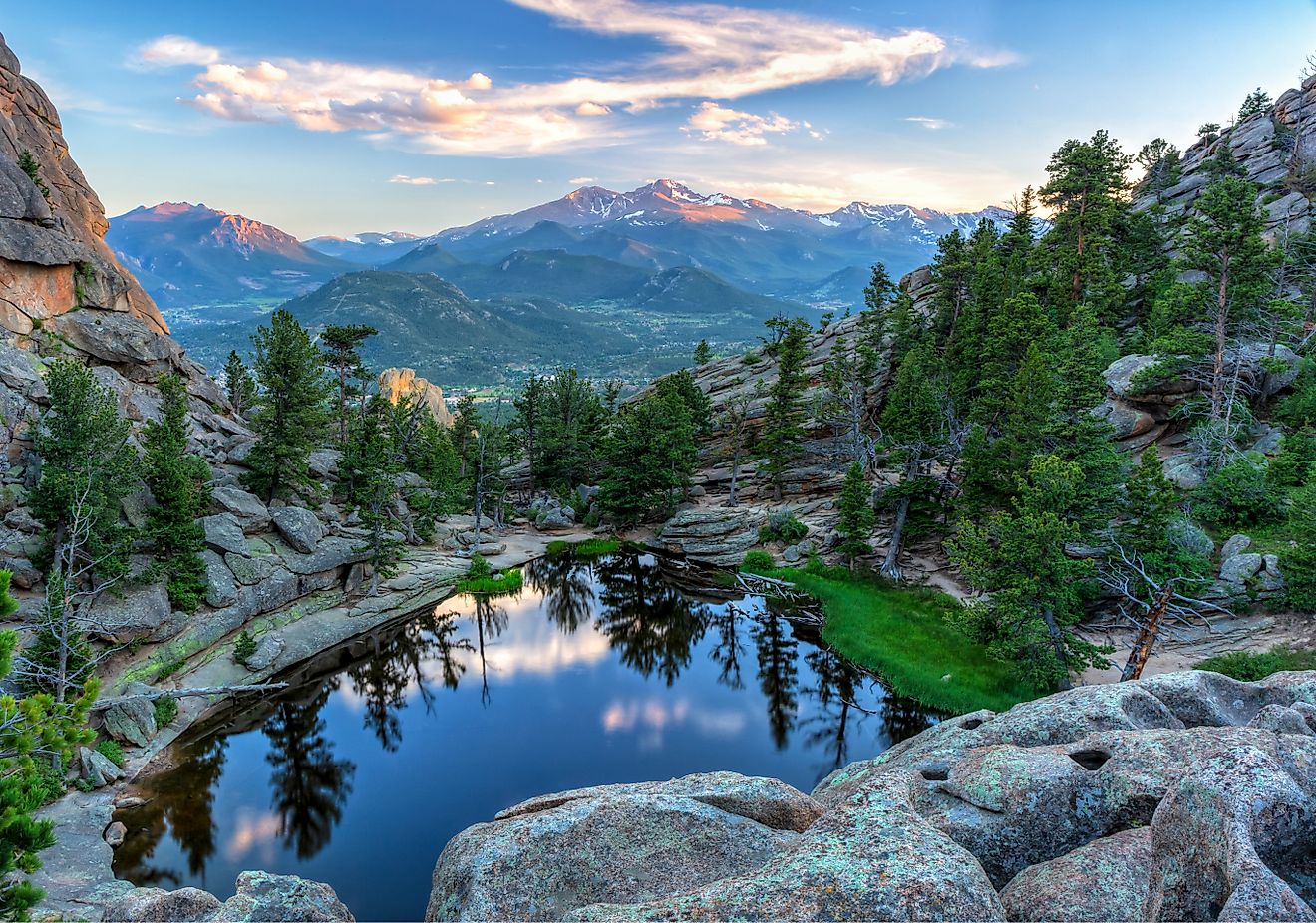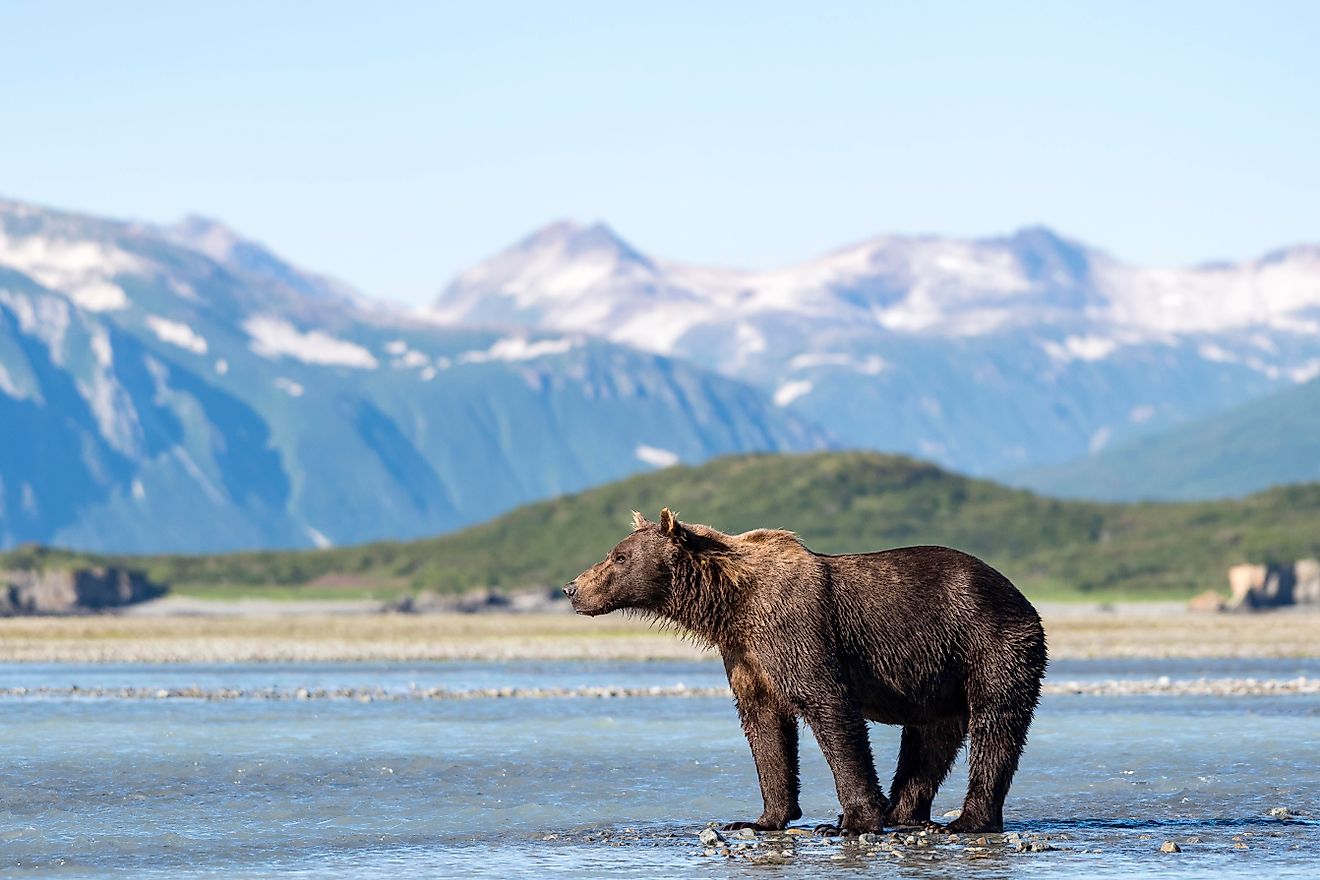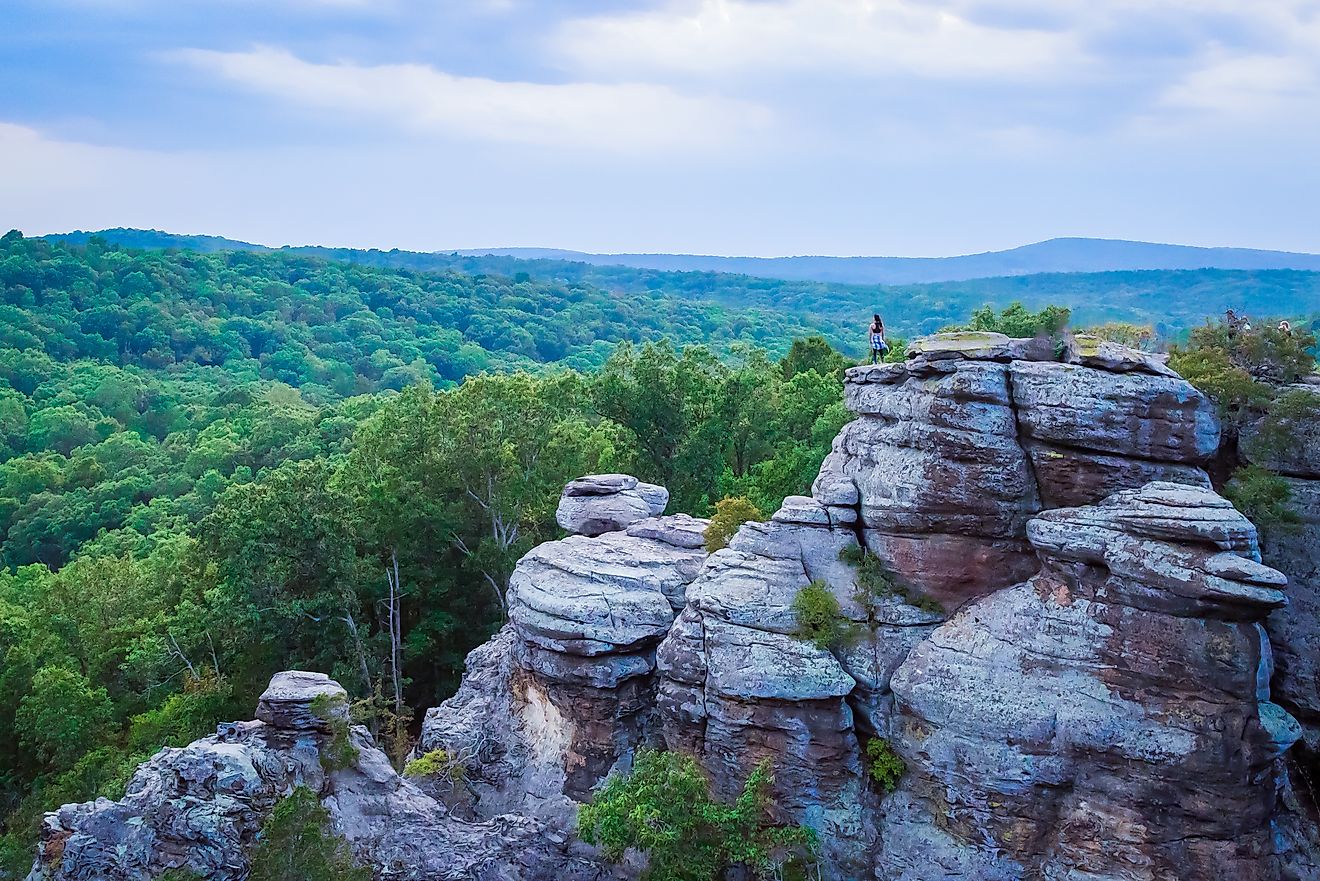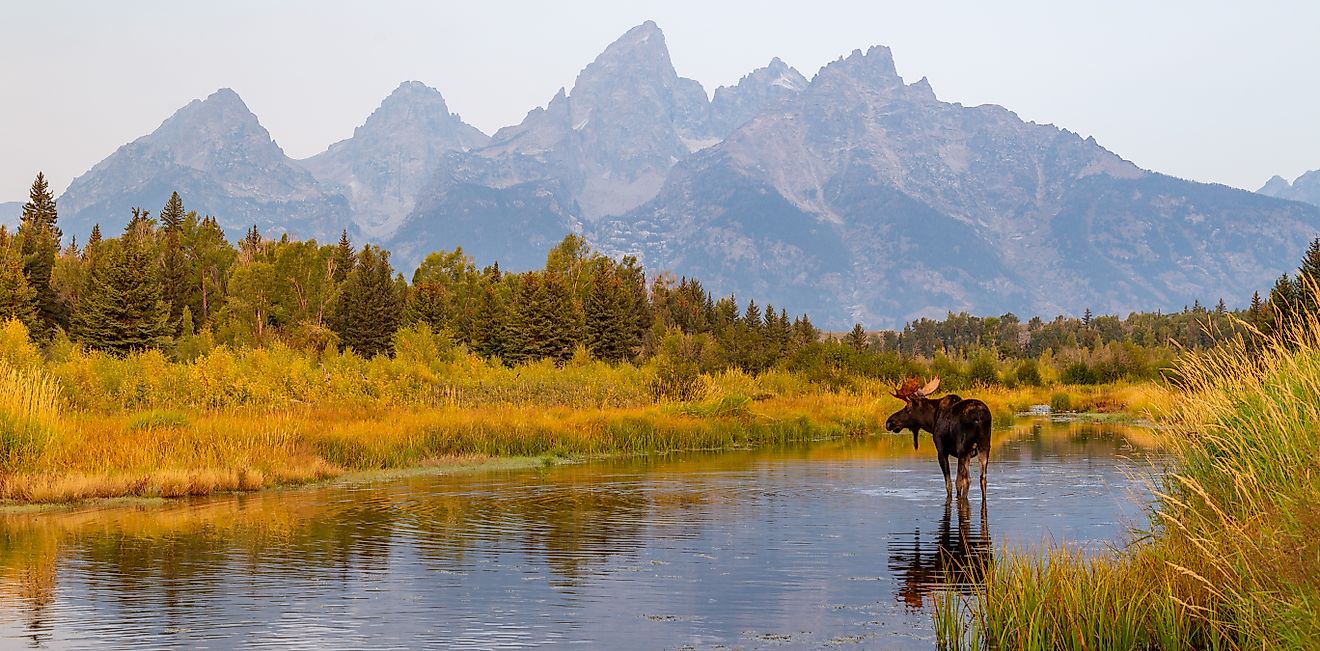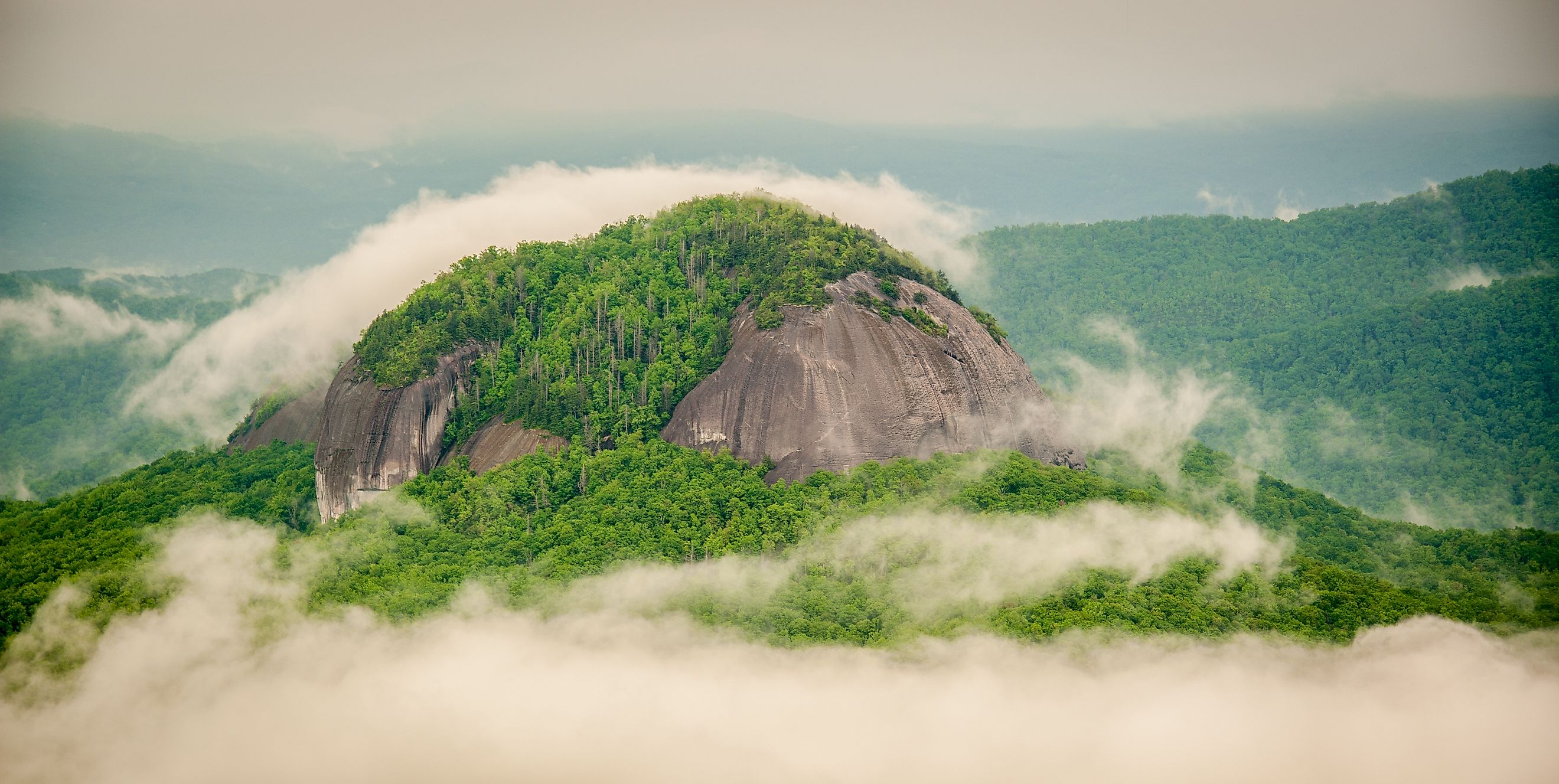
Pisgah National Forest
Nestled in the Blue Ridge Mountains of western North Carolina, Pisgah National Forest is one of the most diverse and scenic public lands in the eastern United States. Spanning over half a million acres, this national forest is a paradise for outdoor enthusiasts, a vital part of American conservation history, and a stunning example of the Appalachian landscape at its best.
From waterfalls and wildflowers to rugged trails and remote wilderness, Pisgah National Forest offers something for nearly every kind of traveler. Whether you're hiking a high-elevation ridge, mountain biking through hardwood forests, or simply chasing a waterfall off the Blue Ridge Parkway, this forest delivers the kind of natural beauty that sticks with you.
Let’s explore why Pisgah has earned its place as a must-visit destination in the American Southeast.
Where Is Pisgah National Forest?
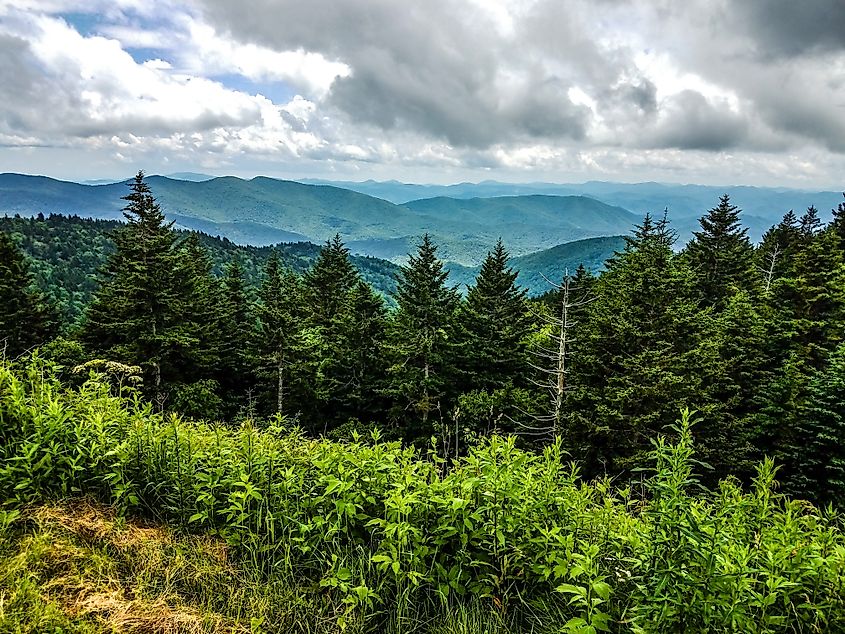
Pisgah National Forest is located entirely within North Carolina and covers approximately 512,758 acres of mountainous terrain. It surrounds several Western North Carolina communities, including Asheville, Brevard, and Old Fort, and is made up of three distinct ranger districts:
-
Pisgah Ranger District: South of Asheville, including areas around Brevard and Transylvania County.
-
Grandfather Ranger District: Near Linville Gorge, Mount Mitchell, and Wilson Creek.
-
Appalachian Ranger District: Stretching along the Tennessee border from the Great Smoky Mountains National Park to Hot Springs.
This forest is part of the larger National Forests in North Carolina, which also include the Croatan, Nantahala, and Uwharrie forests. Together, they are managed by the U.S. Forest Service from headquarters in Asheville.
A Forest Born from Conservation
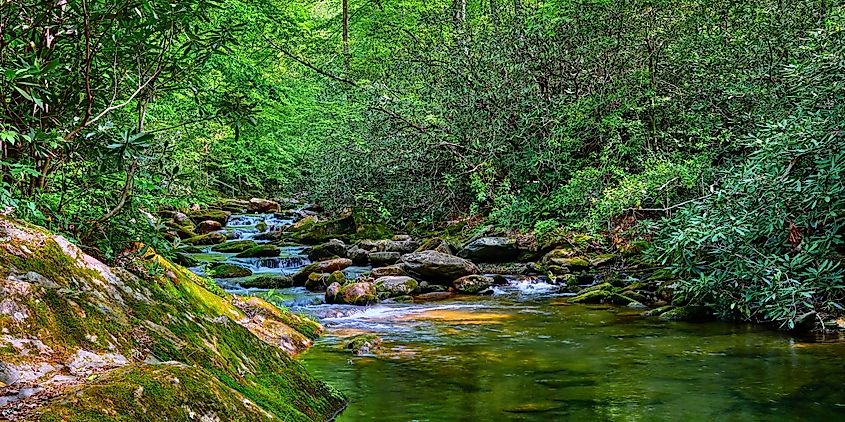
Pisgah National Forest is more than a scenic destination. It played a historic role in the birth of the conservation movement in the United States.
In 1916, Pisgah became one of the first national forests established in the eastern US. Much of its land originally belonged to the Biltmore Estate, built by George Washington Vanderbilt II. In 1914, Vanderbilt's widow, Edith, sold more than 86,000 acres to the federal government, which later became part of the Pisgah preserve. This land was among the first acquired under the Weeks Act of 1911, a law that allowed for the creation of national forests in the eastern part of the country.
Within the forest, you’ll find the Cradle of Forestry, the site of America’s first school of forestry. Opened in 1898, the Biltmore Forest School was operated by German forester Carl Schenck and laid the foundation for sustainable forestry practices in the US. Today, the Cradle of Forestry is a protected heritage site with visitor exhibits, trails, and outdoor programs that bring forest history to life.
Mountains That Touch the Sky
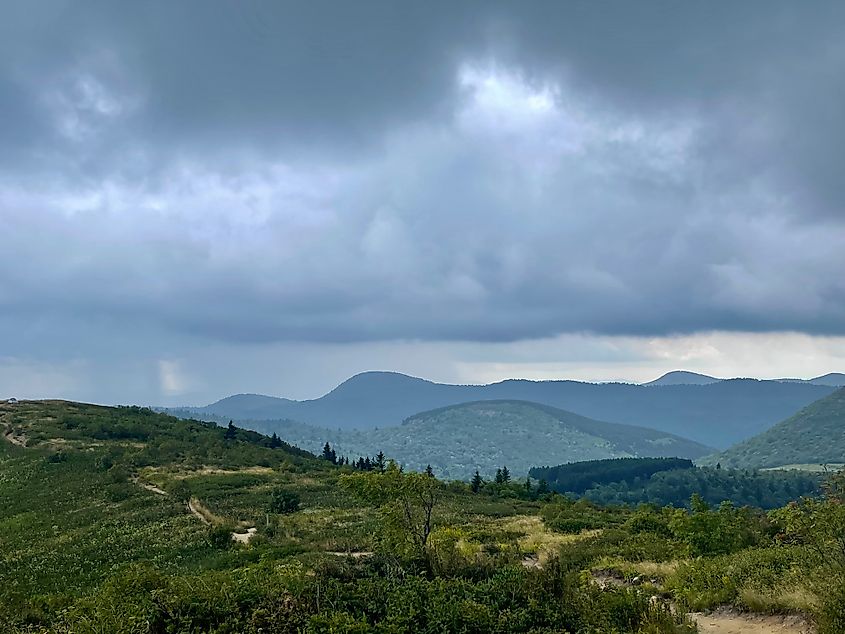
The terrain in Pisgah is anything but flat. With elevations reaching over 6,000 feet, this forest contains some of the highest peaks in the eastern US.
Prominent summits within or near Pisgah include:
-
Black Balsam Knob (6,214 feet)
-
Mount Hardy (6,110 feet)
-
Cold Mountain (6,030 feet; made famous by the novel and film)
-
Tennant Mountain (6,056 feet)
Just outside Pisgah’s border lies Mount Mitchell, at 6,684 feet the tallest mountain east of the Mississippi River. The high elevation and varied terrain of the forest help support rare ecosystems, such as Appalachian spruce-fir forests, and create ideal conditions for outdoor recreation throughout the year.
Waterfalls, Rivers, and Rainforests
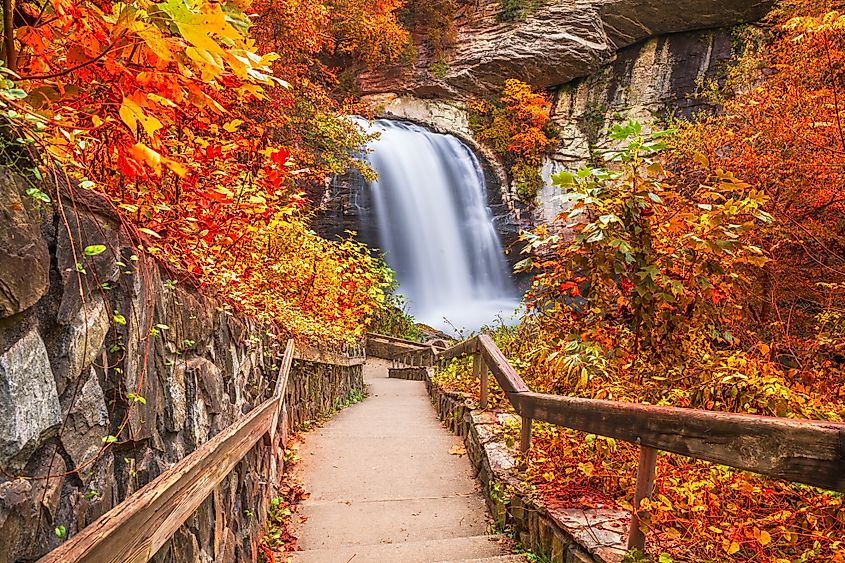
Pisgah is part of the Appalachian temperate rainforest, one of the wettest regions in the continental US. This rainfall feeds countless rivers, creeks, and waterfalls throughout the forest.
Popular waterfalls in Pisgah include:
-
Looking Glass Falls: Easily accessible from the roadside
-
Sliding Rock: A natural waterslide into a cool mountain pool
-
Moore Cove Falls: A gentle cascade with a short hike
-
Catawba Falls: A dramatic waterfall near Old Fort (reopening in 2025 after improvements)
Major rivers like the French Broad River and its tributaries (including Davidson River, Mills River, and Bent Creek) offer great opportunities for fly fishing, kayaking, and tubing.
Hiking and Biking the Blue Ridge
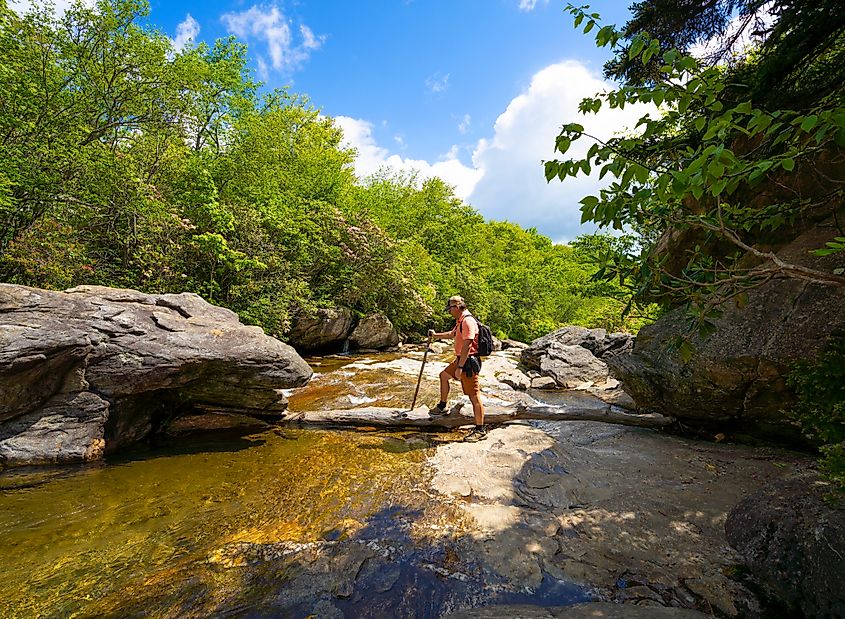
Pisgah National Forest is a top-tier destination for hiking and mountain biking. Its trail network connects to long-distance routes like the Appalachian Trail, Mountains-to-Sea Trail, and Art Loeb Trail, as well as shorter day hikes and loop trails.
Must-try hikes in Pisgah:
-
Black Balsam Knob Loop: A high-altitude trail with panoramic views of the Blue Ridge
-
Graveyard Fields: Popular for fall foliage, blueberry picking, and waterfalls
-
Max Patch: A bald mountain with 360-degree views of the Smokies and the Appalachian Trail
-
Linville Gorge: One of the most rugged hiking areas in the Eastern US
Mountain biking is also huge in Pisgah. Trails like Black Mountain Loop, Sycamore Cove, and Farlow Gap range from beginner to expert-level, with plenty of challenging climbs and thrilling descents through hardwood forests.
Wilderness and Wildlife
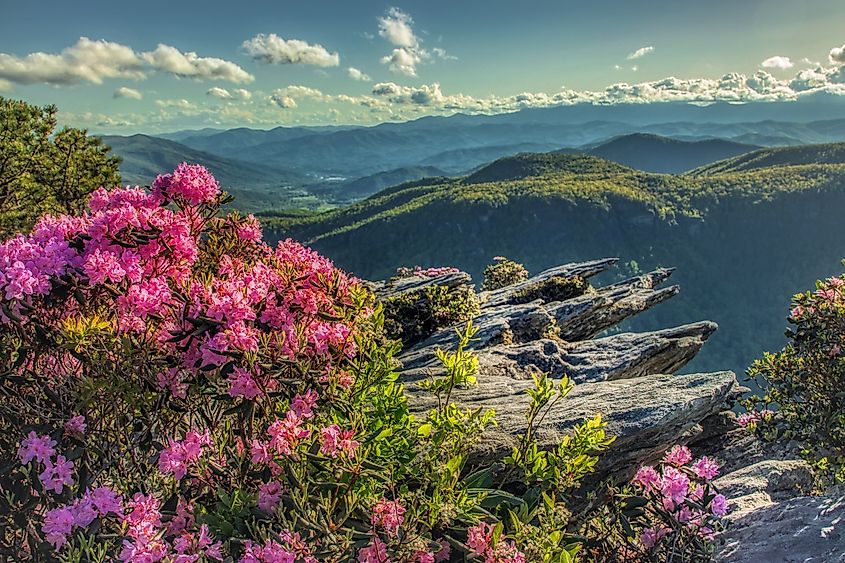
Pisgah is home to 46,600 acres of old-growth forest, offering a rare glimpse into ancient ecosystems that have never been logged. About 10,000 acres of that is found in Linville Gorge Wilderness, one of the most biologically diverse and rugged areas in the East.
Three designated wilderness areas protect portions of Pisgah:
-
Shining Rock Wilderness: Known for quartz outcroppings and high-elevation hikes
-
Middle Prong Wilderness: Less trafficked and filled with deep forests
-
Linville Gorge Wilderness: Nicknamed “the Grand Canyon of the East”
These wilderness areas are managed for solitude and natural conditions, with limited signage and development. Wildlife here includes black bears, bobcats, white-tailed deer, salamanders, and more than 100 species of birds.
Scenic Drives and Parkway Access
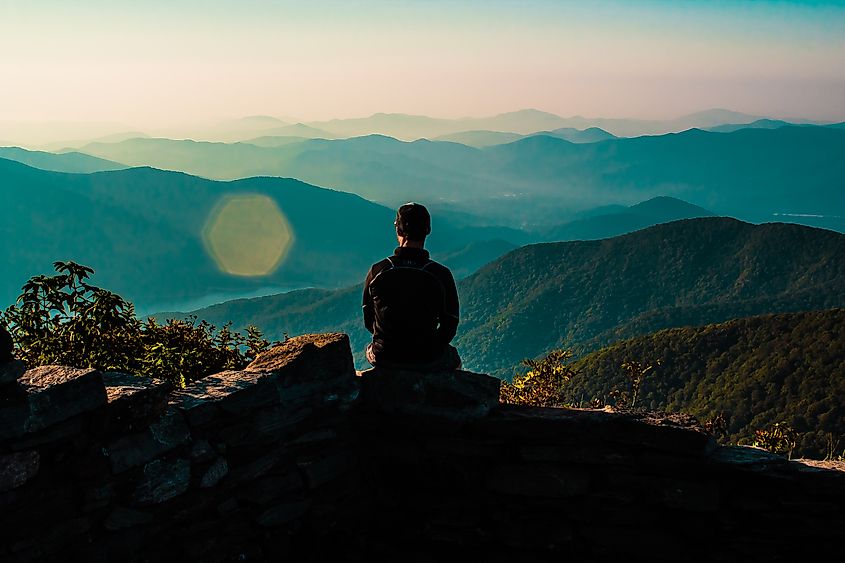
The Blue Ridge Parkway winds through parts of Pisgah National Forest and serves as a scenic gateway to trailheads, overlooks, and campgrounds. Some of the best stops along the parkway in this region include:
-
Devil’s Courthouse
-
Graveyard Fields
-
Black Balsam Knob
-
Craggy Gardens
Just off the parkway, the Pisgah Ranger Station and Visitor Center near Brevard offers maps, current trail conditions, and a nature center for families and first-time visitors.
Campgrounds and Visitor Facilities
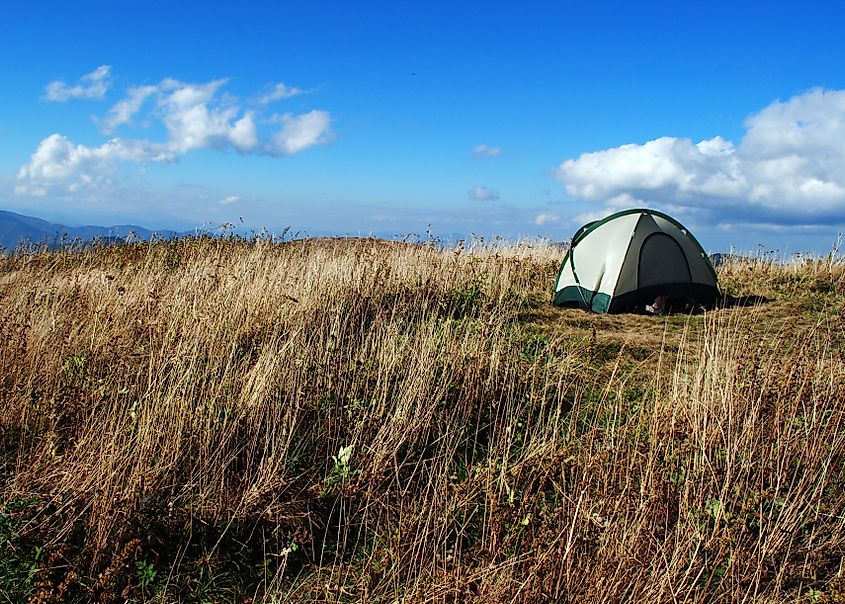
Pisgah National Forest offers a variety of camping options, from primitive backcountry sites to developed campgrounds with amenities.
Some popular campgrounds include:
-
Davidson River Campground: Near Brevard, close to waterfalls and trails
-
Lake Powhatan Campground: Family-friendly, located near Bent Creek and the NC Arboretum
-
Curtis Creek Campground: More remote, near Old Fort
Dispersed camping is also allowed in most areas of the forest, though rules vary depending on the district and season. Be sure to check fire regulations and bear safety guidelines before setting up camp.
How to Plan Your Visit
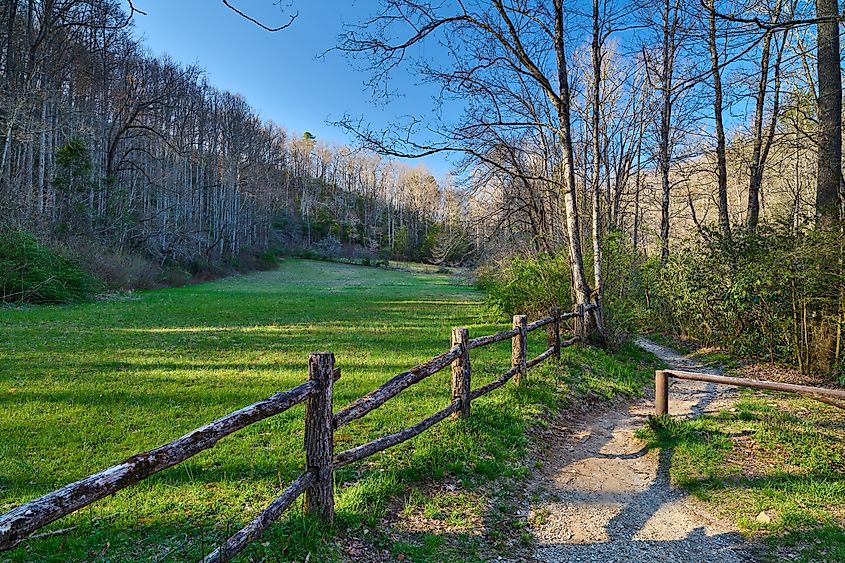
If you’re planning your first trip to Pisgah National Forest, consider the following tips:
-
Start near Brevard: This is one of the most accessible entry points with lots of nearby waterfalls, trails, and services.
-
Use ranger stations: Stop by the Pisgah Ranger Station or Grandfather District Office for maps and info.
-
Prepare for weather: Conditions can change quickly at high elevations. Bring layers, rain gear, and plenty of water.
-
Pack it in, pack it out: As with all public lands, follow Leave No Trace principles to keep the forest beautiful and clean.
Why Pisgah National Forest Is Worth the Trip
With its breathtaking scenery, deep conservation roots, and endless opportunities for adventure, Pisgah National Forest is more than a backdrop for your next hike. It’s a living example of how public lands can preserve natural beauty, protect ecosystems, and provide recreation for millions of people.
Whether you’re a mountain biker, a waterfall chaser, a birdwatcher, or just someone looking to disconnect from city life, Pisgah National Forest has a trail, a view, or a hidden corner waiting just for you.

